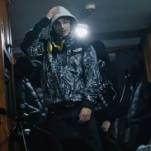Hustwit doesn't have much problem getting
his head around Helvetica, to the degree that he tries: He presents a short
history of the font's 1957 creation and subsequent boom period, when an era of
crowded design and flowing script-fonts gave way to a need for "rational
typefaces" to present a growing wave of information in a sharp, legible,
emotionally neutral way. But mostly, he just lets a bevy of experts pontificate
on what makes a good font, on formal typography training vs. unrestricted
creativity, and on ugliness as a disease designers are trying to cure. Some of
his interviewees consider Helvetica a blessed counter to the 1950s' cluttered
visual styles; others consider it part of the problem, because it's an
overused, sterile, easy choice. Either way, they express themselves in
entertainingly broad, emotional terms. (One German designer, in response to the
question of why Helvetica is still popular after 50 years: "I don't know. Why
is bad taste ubiquitous?")
Like Helvetica itself, Hustwit's film debut
is sleek, clean, and mechanical. He sets his talking-head interviews to
modernistic, minimalist music, and spaces them out with rapturous montages
focusing on the many, many public signs and familiar corporate logos in
Helvetica. Even the interviews are bright and slick, since they take place in
the designers' professional spaces, which tend to be spacious, shiny, and
calculated for impact. His doc sprawls a little, and could use more focus and
more concrete information—in particular, he often neglects to identify
his multinational interviewees by profession or country of origin, or explain
why he chose them, apart from the way they can be trusted to sigh over
Helvetica as "the perfume of the city." Then again, given how they manage to
turn a narrow fanatic's subject into an expansive, widely relevant discourse,
maybe he doesn't need any other reason.
Key
features: None.









































